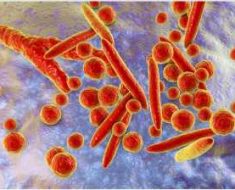Editor’s note: Find the latest COVID-19 news and guidance in Medscape’s Coronavirus Resource Center.
People who are fully vaccinated against COVID-19 can safely gather unmasked and inside with non-vulnerable people who are not yet immunized, according to long-awaited guidance released today by the CDC.
“Today’s action represents an important first step. It is not our final destination,” CDC Director Rochelle Walensky, MD, said at the White House briefing Monday. “As more people get vaccinated levels of COVID-19 infection decline in communities, and as our understanding of COVID immunity improves, we look forward to updating these recommendations to the public.”
According to the new guidance, people who are at least 2 weeks out from their last dose can:
-
Visit with other fully vaccinated people indoors without wearing masks or physical distancing.
-
Visit with unvaccinated people from a single household who are at low risk for severe COVID-19 disease indoors without wearing masks or physical distancing
-
Avoid quarantine and testing following exposure to someone if they remain asymptomatic.
However, there are still restrictions that will remain until further data is collected. Those who are fully vaccinated must still:
-
Wear masks and physically distance in public settings and around people at high risk for severe disease.
-
Wear masks and physically distance when visiting unvaccinated people from more than one household.
-
Avoid medium- and large-sized gatherings.
-
Avoid travel.
People considered at high risk for severe disease include those with cancer, chronic kidney disease, COPD, Down syndrome, heart disease, heart failure, a weakened immune system, obesity, sickle cell disease, and type 2 diabetes. It also includes pregnant women and smokers.
“In public spaces, fully vaccinated people should continue to follow guidance to protect themselves and others, including wearing a well-fitted mask, physical distancing (at least 6 feet), avoiding crowds, avoiding poorly ventilated spaces, covering coughs and sneezes, washing hands often, and following any applicable workplace or school guidance,” the guidance says. “Fully vaccinated people should still watch for symptoms of COVID-19, especially following an exposure to someone with suspected or confirmed COVID-19.”
Respecting travel restrictions is still crucial, Walensky said, given past surges and variants that have emerged after periods of increased travel.
We would like to give the opportunity for vaccinated grandparents to visit children and grandchildren who are healthy and local,” Walensky said.
But, she said, “It’s important to realize as we’re working through this that over 90% of the population is not yet vaccinated.”
For now, there is not enough data on transmission rates from those who are vaccinated to the rest of the public. However, Fauci said at a briefing last month that preliminary data are “pointing in a very favorable direction.”
Studies from Spain and Israel published last month showed the amount of viral load — or the amount of the COVID-19 virus in someone’s body — is significantly lower if someone gets infected after they’ve been vaccinated, compared with people who get infected and didn’t have the vaccine. Lower viral load means much lower chances of passing the virus to someone else, Fauci said.
“The science of COVID-19 is complex,” Walensky said, “and our understanding of it continues to evolve.”
Source: Read Full Article





